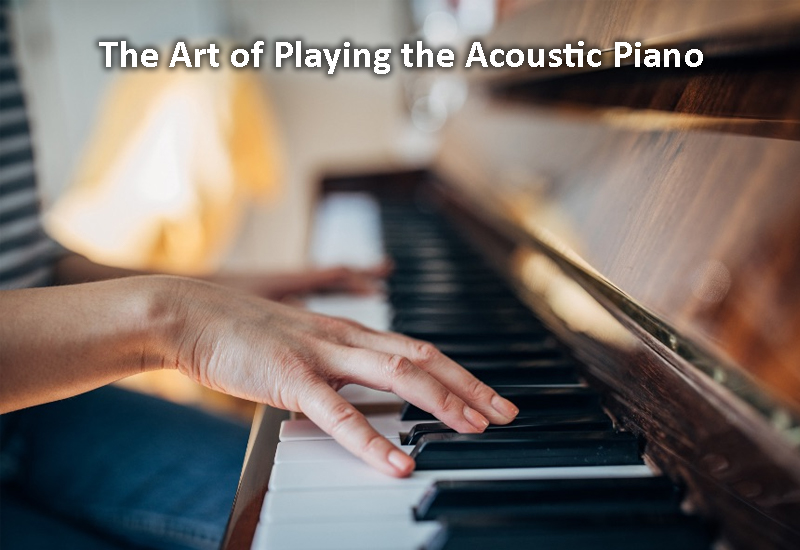The Art of Playing the Acoustic Piano: Techniques for Mastering the Instrument

The traditional piano is a breathtaking instrument that requires time and dedication to master. It includes vital techniques, like developing good posture and finger placement, building finger strength and skill, practising proper pedalling techniques, and developing a solid musical ear. By incorporating these techniques into your practice routine and dedicating yourself to consistent practice, you can unlock the full range of expression and emotion that the piano offers. You can become the pianist you’ve always wanted to be with patience and perseverance. This post mentions some of the most influential acoustic piano mastering techniques.
Develop Proper Posture and Finger Placement
- Good posture is essential for preventing physical strain and injury and allowing for greater control and precision in playing.
- Sitting straight with your leg flat on the floor and your arms and hands relaxed.
- Your elbows should be at a comfortable angle, and your fingers should be curved over the keys.
- Ensure your wrists are not resting on the keyboard or bent upward, as this can lead to tension and discomfort in the hands.
- Use the tips of your fingers rather than the pads when striking the keys, allowing for more precise and controlled movements.
- Start by placing your fingers on the keys in a relaxed, curved position.
- Practice striking the keys with your fingertips for proper finger placement and control.
- Avoid hitting neighbouring keys accidentally by using the tips of your fingers to strike the keys precisely and precisely.
Build Finger Strength and Dexterity
- Regular practice exercises, such as scales, arpeggios, and Hanon exercises, can help build finger strength and dexterity by practising repetitive patterns and movements.
- Consistent practice is essential for building finger strength and agility, as progress comes gradually over time with consistent effort.
- Practise playing with both hands to build coordination and improve overall technique.
- Start with simple pieces and gradually work on more complex ones as your skills improve.
- Focus on proper finger placement and posture when practising, as this helps ensure you use the correct technique and avoid injury.
- Don’t overexert yourself, as this can lead to injury. Take regular breaks and listen to your body to avoid strain or fatigue.
Practise Proper Pedaling Techniques
- Use your ears to guide your pedalling movements, adjusting as necessary to create the desired sound.
- Make sure you use the correct pedal for the passage you are playing, such as the sustain pedal for creating a rich, full sound or the soft pedal for creating a more muted, intimate sound.
- Be aware of when not to pedal, such as in passages with quick notes or staccato articulation, to keep the sound crisp and clear.
- Practice using different pedalling techniques, such as half-pedalling or changing pedals mid-note, to create a variety of sound textures.
- Experiment with different pedalling techniques and durations to find what works best for each passage, as there is no one-size-fits-all approach to pedalling.
Develop a Strong Musical Ear
- Ear training exercises can help you develop the ability to recognise and reproduce different musical elements, such as intervals and chords.
- Practising with recordings or other musicians can help you develop your ability to play in time and tune with others.
- Listening to various musical styles and genres can expand your musical vocabulary and inspire your playing.
- It’s essential to focus on active listening when practising or listening to music, paying attention to the different elements and how they work together.
- Developing a solid musical ear takes time and patience, but it’s a skill that can significantly enhance your playing and musicianship.
Conclusion
Mastering the acoustic piano is a journey that requires patience, dedication, and the right techniques. By developing proper posture and finger placement, building finger strength and skill, practising proper pedalling techniques, and developing a strong musical ear, you can take your playing to the next level and truly master this beautiful instrument.
For More Information Visit: Mind MY Feed



